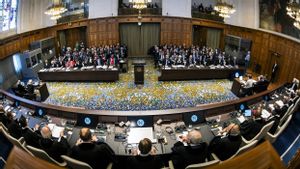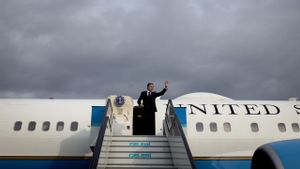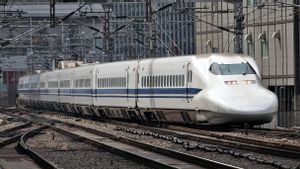JAKARTA - Chinese people began their annual mass homecoming period on Friday, with around 9 billion trips expected to be made over the 40 days around the 2023 Chinese New Year holiday.
That's nearly double the 4.7 billion trips made during the busy Spring Festival travel period in 2023, when extremely strict COVID-19 restrictions are lifted.
Millions of people will travel back to their hometowns to reunite with their families to celebrate Chinese New Year, which falls on February 10 this year, the world's largest mass homecoming tradition every year, reported by Reuters on January 26.
About 80 percent of the 9 billion trips were driverless road trips, also a record, and the rest were made by rail, air and water, Chinese state television CCTV reported.
Nearly 11 million train trips, China's main mode of transport, are expected to take place on Friday. A total of 480 million trips will be made nationwide over the 40-day period, a 38 percent jump from 2023 and a 17 percent increase from 2019 before the pandemic.

Train travel and air travel skyrocketed on the first day of this year's period. Passengers struggled to get train tickets, even though China is home to the world's largest high-speed train network.
Miranda Guo, a cartoonist based in Hangzhou, had difficulty getting train tickets, before purchasing a higher-priced package offered by a third-party booking app.
"I think it's difficult to buy tickets this year, because almost all of my colleagues failed to get tickets. Many of them are still on the waiting list," Guo said.
Meanwhile, air passenger travel is expected to reach 2 million on Friday, CCTV reported. During this year's travel surge, the number of trips made by air is expected to jump to 80 million, according to China's aviation regulator, up 9.8 percent from 2019.
SEE ALSO:
Airports in China's biggest cities, Beijing and Shanghai, will be bracing for large crowds. Two airports in Shanghai, Pudong and Hongqiao estimate passenger traffic will jump 57.6 percent annually in the 40-day period. Meanwhile, airports in Beijing will experience a surge of more than 60 percent.
Overseas travel is also predicted to increase during peak travel. China's aviation authorities have arranged more than 2,500 additional international flights to destinations in Asia including Southeast Asia, Japan and South Korea.
Additionally, additional trains and flights were also arranged to popular domestic tourist cities including Harbin in northeastern China and Sanya, a popular tropical destination in the south.
The English, Chinese, Japanese, Arabic, and French versions are automatically generated by the AI. So there may still be inaccuracies in translating, please always see Indonesian as our main language. (system supported by DigitalSiber.id)


















